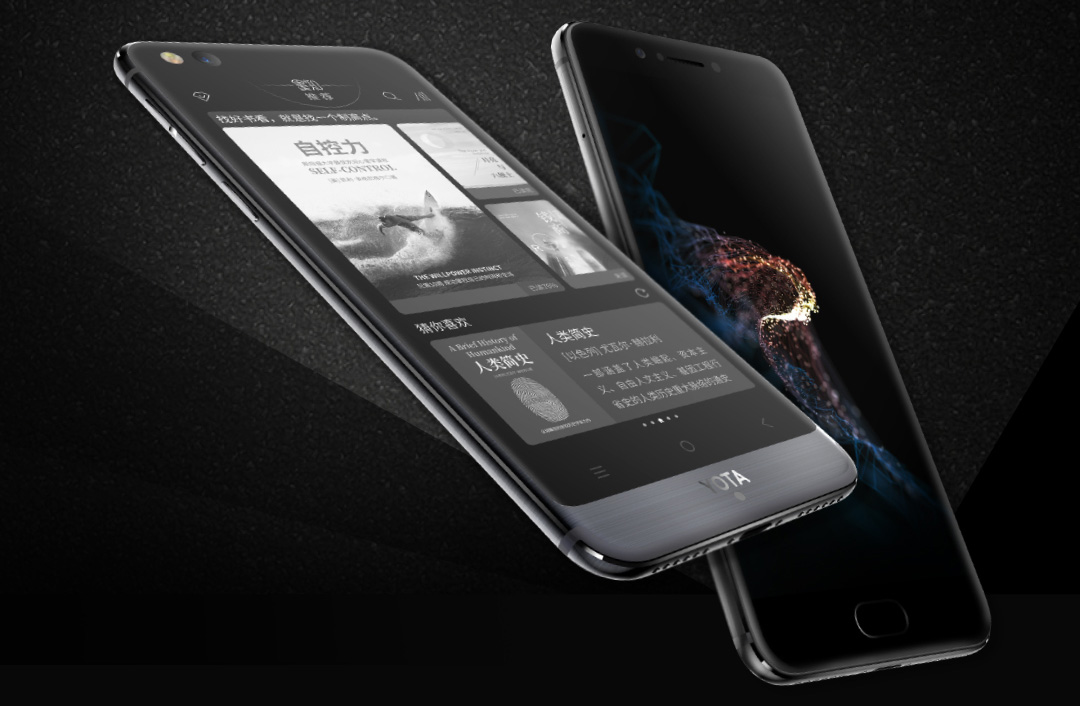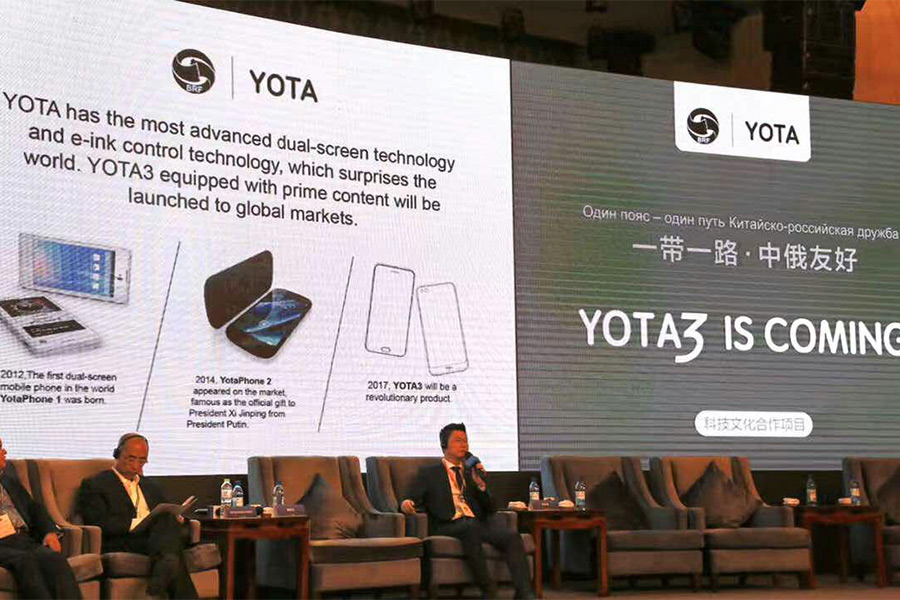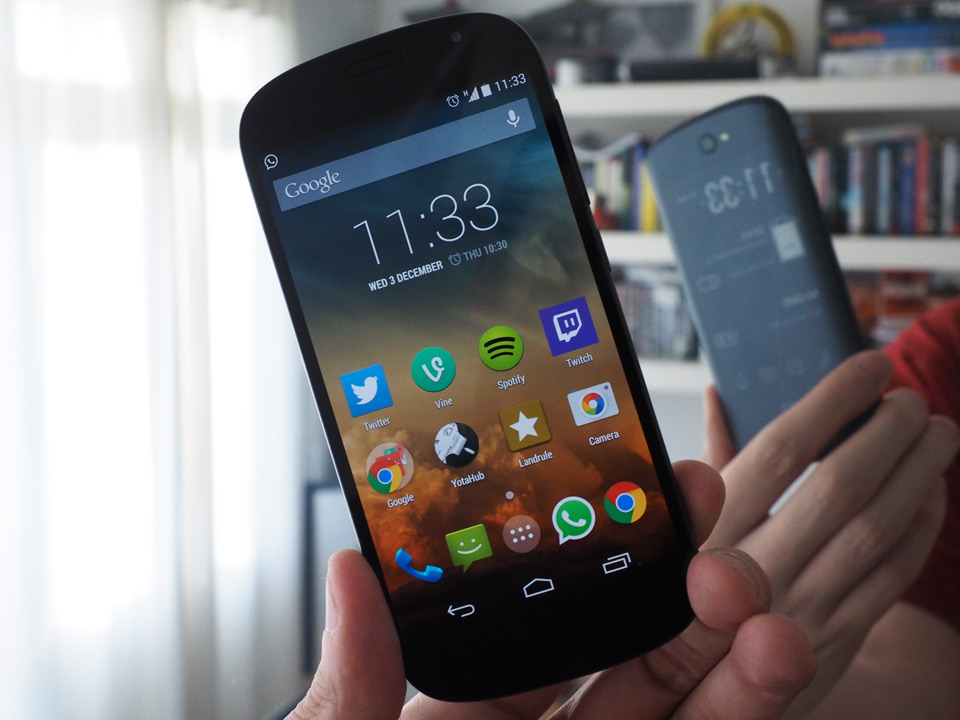
Remember Yotaphone, the twin-display Android smartphone (color LCD in front, e-ink in back)? Today at CTIA in Las Vagas, Yota devices, the company behind the innovative handset, introduced Ruby, a sleek LTE hotspot with a small e-ink screen. We don't usually get too excited about such devices, but Ruby looks like something out of Jony Ive's workshop, with some interesting features to match. The design recalls the iPod mini but is made of white plastic instead of aluminum.
Along the top edge, you'll find the e-ink display and a two-way power switch -- slide it to the left and Ruby behaves like a secure hotspot, slide it to the right and it's a public access point. The e-ink screen shows battery and signal status, the number of connected devices and a smiley icon to confirm public mode. On the bottom edge is a trick flap that's both a micro-USB socket and a USB Type A plug depending on how it's positioned -- the micro-SIM slot is cleverly hidden behind it. A programmable RGB LED mounted behind the Yota logo completes the package on the front of the hotspot.
Ruby currently supports quad-band EDGE, plus HSPA+ and LTE for the European market, but the radio can be configured (in hardware) to support other bands. The 2100mAh battery powers the unit for about 16 hours of use (60 hours on standby) and can be charged to 70 percent capacity in about an hour. Yota's signed a few deals with carriers in Russia and Europe and the device is expected to become available to Russian customers in two to three weeks for about $120 (unsubsidized). No word on whether Ruby will land in the US (yet). Take a look at our hands-on gallery below.
Filed under: Wireless, Mobile
Comments
 Well, the wait is finally over. After a teaser back in June, the third-gen dual-screen YotaPhone -- now simply dubbed Yota3 -- was unveiled in China yesterday. Pretty much all the main specs are identical to the leak Engadget received earlier, but th...
Well, the wait is finally over. After a teaser back in June, the third-gen dual-screen YotaPhone -- now simply dubbed Yota3 -- was unveiled in China yesterday. Pretty much all the main specs are identical to the leak Engadget received earlier, but th...
 Well, the wait is finally over. After a teaser back in June, the third-gen dual-screen YotaPhone -- now simply dubbed Yota3 -- was unveiled in China yesterday. Pretty much all the main specs are identical to the leak Engadget received earlier, but th...
Well, the wait is finally over. After a teaser back in June, the third-gen dual-screen YotaPhone -- now simply dubbed Yota3 -- was unveiled in China yesterday. Pretty much all the main specs are identical to the leak Engadget received earlier, but th...
 If you're one of the few people who are still waiting for the next dual-screen YotaPhone, listen up: we finally have an update for you. During Harbin's China-Russia Expo over the weekend, Baoli Yota -- the joint venture formed by investor Baoli (form...
If you're one of the few people who are still waiting for the next dual-screen YotaPhone, listen up: we finally have an update for you. During Harbin's China-Russia Expo over the weekend, Baoli Yota -- the joint venture formed by investor Baoli (form...
 It's fair to say that the global launch of Yota Device's last E-Ink smartphone didn't quite go to plan. Despite positive reviews and a successful crowdfunding campaign, the Russian startup was forced to scale back its US plans significantly followi...
It's fair to say that the global launch of Yota Device's last E-Ink smartphone didn't quite go to plan. Despite positive reviews and a successful crowdfunding campaign, the Russian startup was forced to scale back its US plans significantly followi...
















